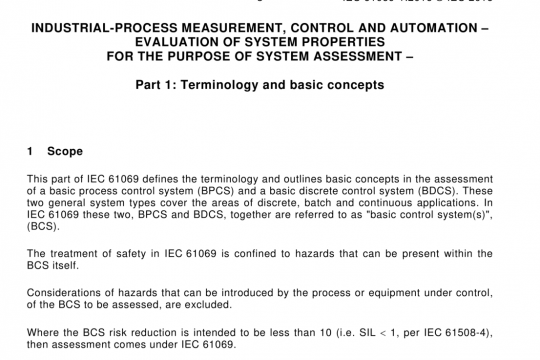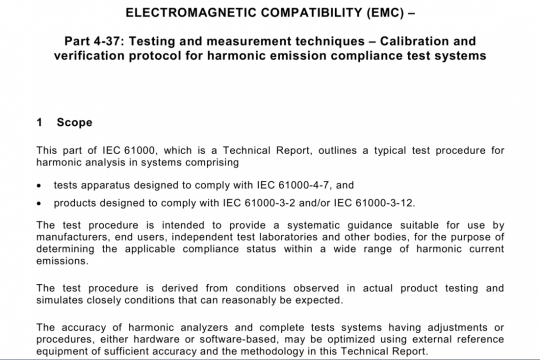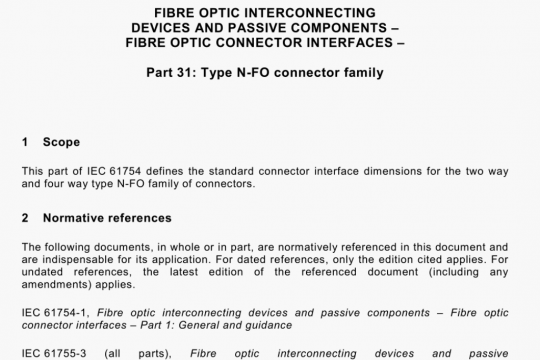IEC TR 63274 pdf free download
IEC TR 63274 pdf free download.Power consumption of high dynamic range television sets.
4 Overview
4.1 High dynamic range video
HDR video signals are able to represent pictures that can be displayed with much higher peak luminance levels and much darker black levels compared to traditional SDR signals. HDR signals can potentially change the related power consumption of HDR-capable televisions. For more information on the history, nature, and ranges of HDR video, see IEC TR 62935:2016, Clause 4 [14].
For information on the early HDR Standards and Related Activities, see IEC TR 62935:2016, Clause 5 [14].
However, most of the standards outlined in IEC TR 62935:20 16, Clause 5 [14] have been updated or superseded since its publication.
ITU-R Recommendation BT.2020-1 has been updated to BT.2020-2 [9] and now includes the higher frame rates of 100 Hz and 120/1,001 Hz. ITU-R has also now published Recommendation BT.2100-2 [5] that defines HDR formats for both HD and UHD resolutions. These formats use the same colour primaries as BT.2020-2 [9] but with two different transfer functions that may be used for HDR:
• perceptual quantizer (PQ), which was previously standardized in SMPTE ST 2084 [4];
• hybrid log-gamma (HLG), which was previously standardized as ARIB STD-B67 [15].
BT.2100-2 [5] also adds support for lCtCp constant luminance colour representations, but deprecates YCbCr from ITU-R BT.2020-2 [9].
CEA standards have now become CTA standards, with exactly the same number, as a result in the name change of the association from the Consumer Electronics Association to the Consumer Technology Association. CTA-861-F [16] has now been superseded by CTA-861-G [10], which adds support for signalling the HLG EOTF and adds the capability to support alternative dynamic HDR metadata systems SMPTE ST 2094-10 [11] (also known as Dolby Vision®3 dynamic metadata format) and SMPTE ST 2094-40 [12] (also known as HDRIO+).
In December 2016, the HDMI Forum extended its original HDMI® 2.Ob specification, adding additional support for HDR video transport, in line with CTA-861-G [10], to include metadata signalling for hybrid log-gamma (HLG). The HDMI Forum included the following notice on its website:
NOTICE: Previously, HDMI Specification Version 2.Ob (HDMI 2.Ob) only supported HDR (High Dynamic Range) video transport in the SMPTE ST 2084 EOTF (as applied in the media profile commonly known as HDR1O), by referencing the CTA-861.3 specification. The Consumer Technology Association (CTA) has recently notified the HDMI Forum of the adoption of a new version of the CTA-861 Specification, CTA-861-G. This new version provides additional support for HDR Video transport by including (among others) an extension to the static metadata signalling to include the HLG (Hybrid Log Gamma) EOTF. The HDMI Forum has assessed the applicability of the CTA-861-G Specification to HDMI
2.Ob. The HDMI Forum has confirmed that the extension of the static metadata signalling to include HLG can be utilized under the existing HDMI 2.Ob Specification. This means that HLG Video Transport functionality can be implemented on HDMI 2.Ob compliant devices.In November 2017, the HDMI Forum released its HDMI@ 2.1 [17] specification, which enabled even higher spatial resolutions and support for higher frame rates (10K at 120 Hz maximum) and included Dynamic HDR for specifying HDR metadata on a scene by scene basis or even a frame by frame basis.IEC TR 63274 pdf download.




